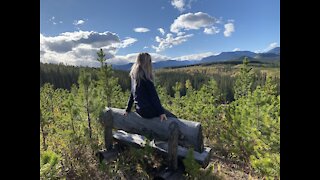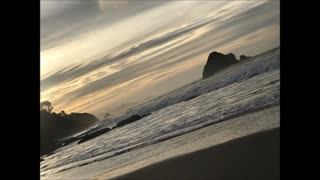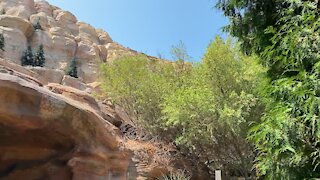Premium Only Content

Outdoor Adventure to Downieville California
Gold was discovered here by Francis Anderson on September 14, 1849. Anderson had joined Phil A. Haven that same year along the North Yuba River.
Downieville was founded in late 1849 during the California Gold Rush, in the Northern Mines area. It was first known as "The Forks" for its geographical location at the confluence of the Downie River and North Fork of the Yuba River.
It was soon renamed after Major William Downie (1820-1893), the town's founder. Downie was a Scotsman who had led an expedition of nine miners, seven of them African American men, up the North Fork of the Yuba River in the Autumn of 1849. At the present site of the town they struck rich gold, built a log cabin, and settled in to wait out the winter. By 1850, Downieville had 15 hotels, 4 bakeries, 4 butcher shops, and numerous saloons.
Josefa Segovia, a young Californio resident of the town, was lynched by a mob on July 5, 1851. The lynch mob held a mock trial, and accused her of killing an American miner. The mock trial quickly led to hanging her from the Jersey Bridge in town. Segovia was the first and only hanging of a woman in the history of California.
In 1853 Downieville was vying to become the new state capital of California, along with fifteen other California communities to replace Vallejo. The capital was moved to Benicia for a year, and then in 1854 to Sacramento.
The Northern Mines area of the gold rush had a number of mining camps with colorful names, such as Brandy City (originally known as Strychnine City), Whiskey Diggins, Poverty Hill, Poker Flat, and Camptonville. Many of these camps disappeared after the gold rush or became ghost towns. Downieville had reached a peak population of over 5,000 people in 1851, but by 1865 had significantly declined. It survived due to its status as the county seat of government in Sierra County, and from its geographic location between Sacramento Valley and Tahoe region/Nevada destinations.
-
 0:27
0:27
MightyMacaws
3 years agoMerlin and Monty : Outdoor Adventure
37 -
 0:42
0:42
MartaPKVideo
3 years agoOutdoor Adventure ( Autumn 2021)
134 -
 1:07
1:07
DearPrudy
3 years agoThe Best Outdoor Adventure Store
62 -
 2:14
2:14
AlanHelmer
3 years agoOutdoor Adventure to Anchor Bay Campground Picture Slideshow
19 -
 0:46
0:46
AlanHelmer
3 years agoOutdoor Adventure on Memorial Day 2021
15 -
 4:11
4:11
CatOlen
3 years ago $0.01 earnedRadiator Springs a racers at Disney California Adventure
25 -
 1:08:49
1:08:49
The Rubin Report
2 hours agoHost Gets Visibly Angry as His Trap for Trump Backfires
34.1K8 -
 LIVE
LIVE
Benny Johnson
1 hour agoLIVE Trump Cabinet Meeting Right Now in White House, Trump Torching Media | Michelle Obama MELTDOWN
8,672 watching -
 LIVE
LIVE
The Shannon Joy Show
2 hours ago🔥🔥100 Day SHOCKER - Trump Is Deporting FEWER Illegal Immigrants Than Biden! He’s Also Pimping Biden’s mRNA & Fast Tracking Self-Amplifying mRNA Shots! With Special Guests John Beaudoin Sr. & Jessica Rose🔥🔥
247 watching -
 LIVE
LIVE
Grant Stinchfield
1 hour agoVenezuela Refuses to Release American Hostages... The Media is Silent!
50 watching